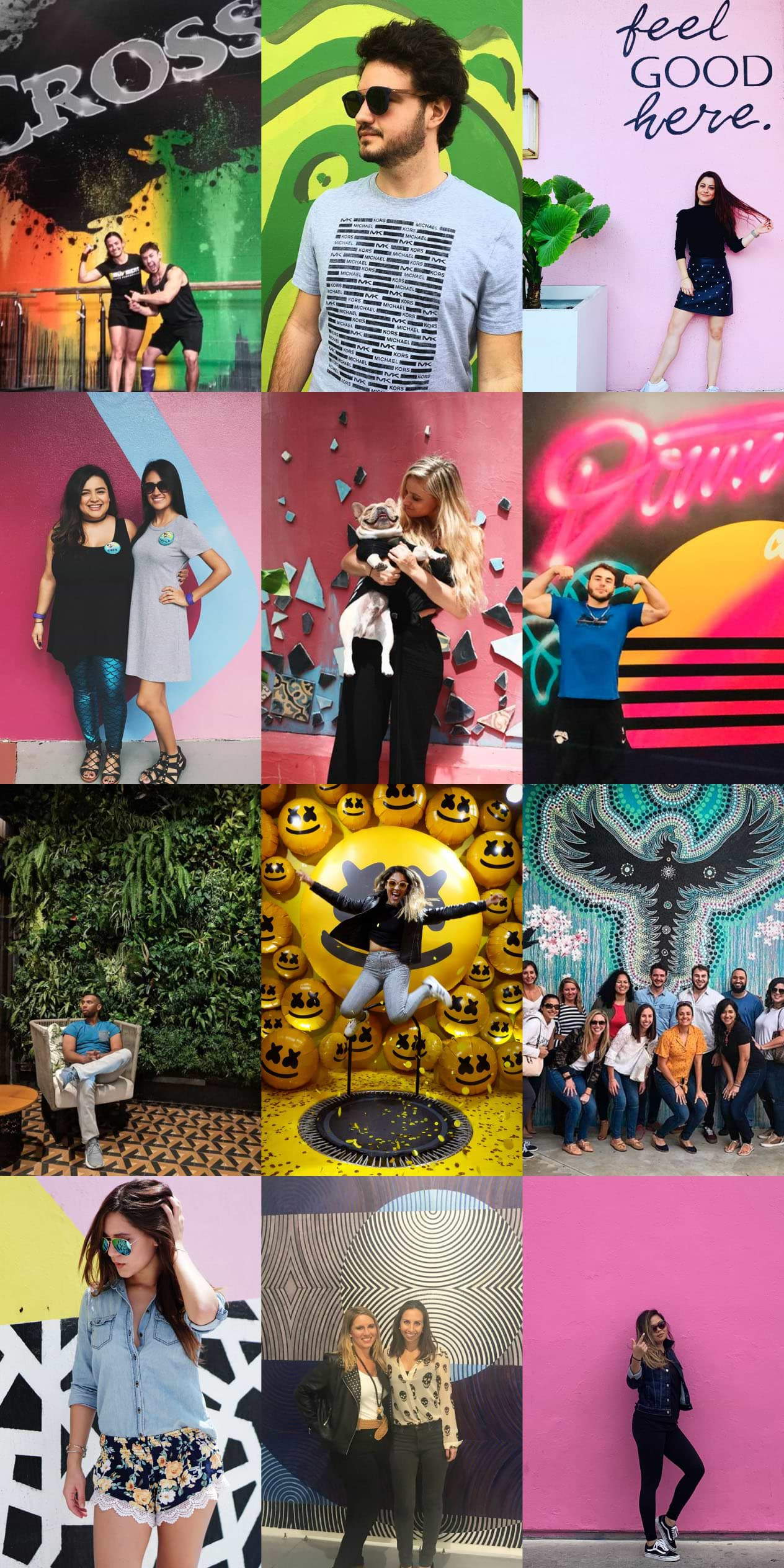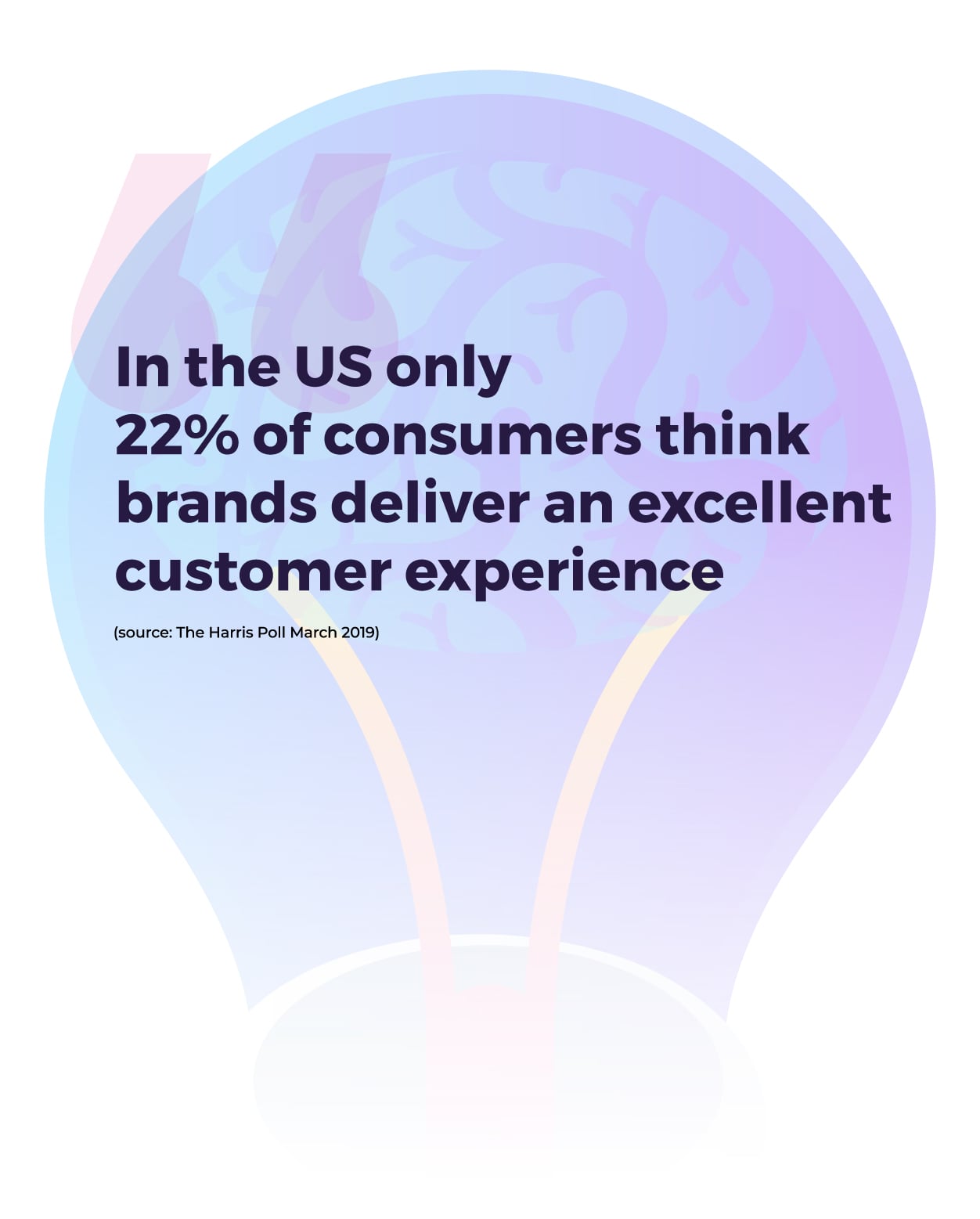Welcome to the Age of Experience
I’m sure you would agree that our world seems to change by the minute. Between the 24-hour news cycle and always evolving technologies you could get whiplash trying to keep up. Back in the 1900’s, we used to develop mass market campaigns based on sales data. That’s what helped us pick the perfect billboard to grab attention on major highways. Our lives were simpler then; now we’re inundated with choices.
Imagine you’re a customer who’s thinking about taking on a health challenge, maybe you would first consider a gym membership. You can choose from Orange Theory, Cross Fit, Pilates, LA Fitness, Equinox, HIIT, RiseNation, spinning and so many others. That’s not even taking into account fitness alternatives like Peleton, Daily Burn, ClassPass or Noom.

Fitness means something different to everyone and luckily, there are options for everyone. While the products haven’t really changed over time, how people experience them has. We’re still talking about exercise bikes, dumbbells and aerobics. If you can get your workout done with any of those, why would you choose one brand over the other?
Connecting on a more personal level
When thinking about our marketing strategies, we analyze consumer behaviors to better understand how to position and talk about brands on a personal level. Since today’s consumers are more demanding, they want something tailored to their individual needs and wants. They are buying the experience – whether it’s tech that has your heartbeat in competition with the room or the convenience of a digital trainer at your fingertips. There’s a unique experience built into all these brands; something more than just a product.
“Experiences” may have become a buzzword, but that doesn’t mean we should ignore it. A recent Harris Group survey tells us that 72% of millennials prefer to spend more on experiences than on material things. This has a lot to do with how social media has taken over all of our lives, not just millennials. Posting on these platforms has created a social currency driven by FOMO and the brag-factor. We want to share parts of our lives that we feel represent us (or who we want to be) and will engage our friends.
For some of our travel, retail or restaurant clients, for example, we’re seeing audiences making planning decisions around “experiences”. Where couples may have started with the idea of any beach destination, now they’ll start with a Google search for “foodie adventures” or “wine tasting resorts”. Where a family may have chosen a restaurant based on having chicken fingers on the menu, now they’re more likely to seek a #freakshake. We’re now tasked with developing solutions for these shifts in behaviors beyond just an Instagram photo op.

CONNECTING ON A MORE PERSONAL LEVEL
When thinking about our marketing strategies, we analyze consumer behaviors to better understand how to position and talk about brands on a personal level. Since today’s consumers are more demanding, they want something tailored to their individual needs and wants. They are buying the experience – whether it’s tech that has your heartbeat in competition with the room or the convenience of a digital trainer at your fingertips. There’s a unique experience built into all these brands; something more than just a product.
“Experiences” may have become a buzzword, but that doesn’t mean we should ignore it. A recent Harris Group survey tells us that 72% of millennials prefer to spend more on experiences than on material things. This has a lot to do with how social media has taken over all of our lives, not just millennials. Posting on these platforms has created a social currency driven by FOMO and the brag-factor. We want to share parts of our lives that we feel represent us (or who we want to be) and will engage our friends.
For some of our travel, retail or restaurant clients, for example, we’re seeing audiences making planning decisions around “experiences”. Where couples may have started with the idea of any beach destination, now they’ll start with a Google search for “foodie adventures” or “wine tasting resorts”. Where a family may have chosen a restaurant based on having chicken fingers on the menu, now they’re more likely to seek a #freakshake. We’re now tasked with developing solutions for these shifts in behaviors beyond just an Instagram photo op.

Make your brand come to life
The brand experience shouldn’t change the brand purpose. Experience doesn’t mean a brand’s manifesto or even brand benefits should change, it’s just a chance to be different or stand out through the experience you offer. You must set yourself apart beyond your product or service. We’ve evolved beyond telling you “what” a brand is about and now need to tell a story about “why”.
A great example comes from my impression of all-inclusive products. In the past I had seen all-inclusives miss the mark on my expectations of quality and service. When I was invited to visit one of the Karisma El Dorado properties to better understand their offering, I was pleasantly surprised! Not just by the beautiful views and exceptional resort but by the individual experiences being offered. It wasn’t your typical all-inclusive, it was more than that. The “Gourmet Inclusive” offering meant that when my drink of choice wasn’t offered at the restaurant we were at, our waiter went to another bar to find it. It meant my lunch had herbs grown in their own greenhouse and local produce native to the area. It meant a menu of pillows that fit my preferences and so much more. Once I had that experience for myself, I wanted to shout it from the rooftops – I was converted. Even on a business trip I knew I had found something unique (which made me run back for pleasure!).

The difference in experience will make you spend more, travel further, even test your patience.
Why?
Because it’s worth it and it’s memorable. That’s a souvenir you can’t buy.
The Future Marketing Organisation study by Marketing Week in partnership with MiQ showed that while 42.4% of marketers think their organization should be structured around the customer (the largest proportion of respondents), currently just 5.8% of business are actually set up this way.
Your experience should shine everywhere
A great brand doesn’t just focus on the final offering. Your customer’s experience should be just as consistent every step of the way. It isn’t enough to have a sought-after experience; it needs to translate into how you build your relationship with the customer online and in the real world.
I’ve talked about the importance of having the right website experience and that’s because it makes a huge difference. According to Temkin Group, 60% of companies believed they were delivering a good mobile experience, BUT… only 22% of consumers felt the same way. You can have the best product in the world, but if your sales process is filled with speed bumps then conversions won’t follow.
At every touchpoint we should be checking in on how we’re translating goals, strategies and tactics into the customer experience. I don’t think the word “experience” is going anywhere for a while. Find me on Twitter and tell me about the last great experience that really made you stop in your tracks.
